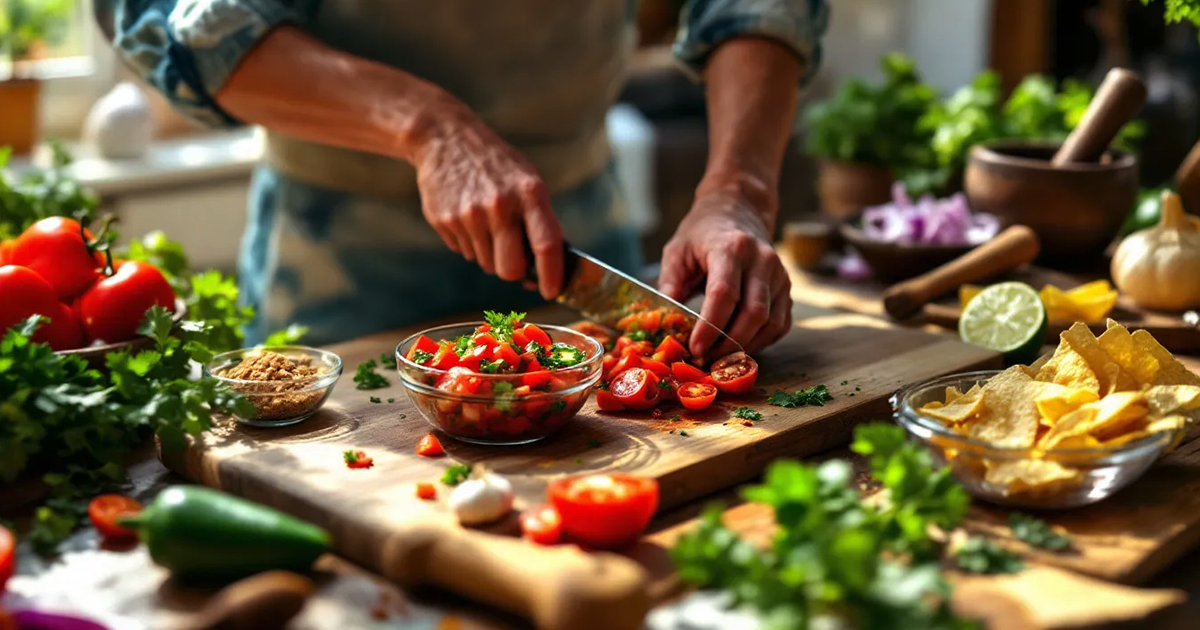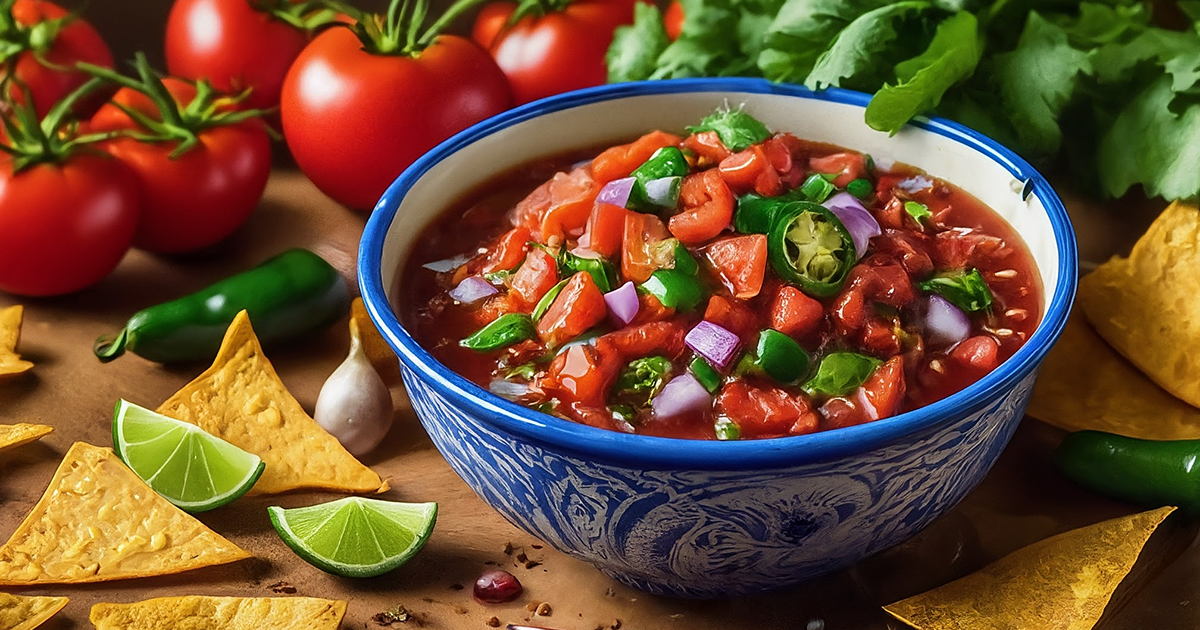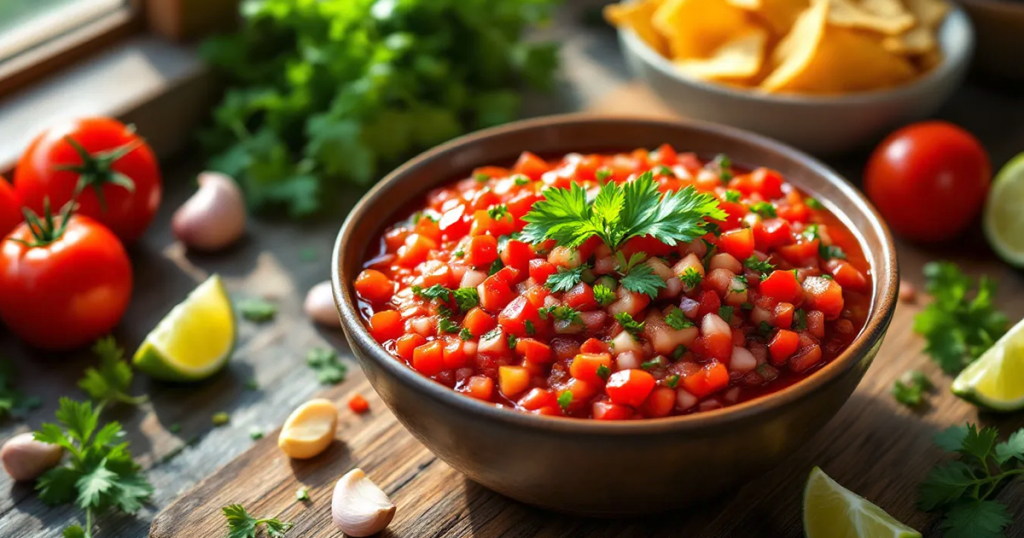The History of Salsa
Salsa has been a staple in Mexican cuisine for centuries, dating back to the Aztecs, Mayans, and Incas. Traditional salsa recipes were made with tomatoes, chili peppers, and herbs, evolving over time with regional variations. The Spanish introduced onions and garlic, adding new layers of flavor. Today, salsa is enjoyed worldwide in countless forms, from fresh pico de gallo to rich, smoky chipotle blends. Understanding its roots enhances the appreciation of every bite.
Essential Ingredients for Authentic Salsa
Great salsa starts with fresh ingredients. Tomatoes, onions, cilantro, lime, and chili peppers are essential components. Variations include tomatillos for a tangy green salsa, mango for a tropical twist, or roasted peppers for depth. The balance of acidity, spice, and sweetness is key. Using fresh, ripe produce ensures a vibrant, flavorful salsa that enhances any dish.

Classic Salsa Recipes
1. Pico de Gallo: A fresh salsa with chopped tomatoes, onions, cilantro, lime, and jalapeños.
2. Roasted Tomato Salsa: Charred tomatoes, garlic, and chili peppers blended for a smoky flavor.
3. Salsa Verde: Tomatillos, onions, and serrano peppers blended for a tangy green salsa.
4. Fruit Salsa: Mango or pineapple mixed with peppers and lime for a sweet-spicy kick.
Tips for Making the Best Salsa
For a perfect salsa, always use fresh ingredients and adjust spice levels to taste. Roasting vegetables enhances flavor, and allowing salsa to rest before serving deepens its taste. Adding a pinch of sugar can balance acidity, and experimenting with herbs like oregano or cumin adds complexity. Avoid over-blending to maintain texture, and store salsa properly for maximum freshness.

Pairing Salsa with Dishes
Salsa is incredibly versatile, pairing well with tacos, grilled meats, seafood, and even eggs. It can be used as a dip, marinade, or topping. Pairing salsa with the right dish enhances both flavors. For example, a smoky chipotle salsa complements grilled steak, while a bright mango salsa pairs perfectly with fish.
Health Benefits of Salsa
Salsa is packed with nutrients. Tomatoes are rich in antioxidants, chili peppers boost metabolism, and lime adds vitamin C. Fresh, homemade salsa is low in calories and free from preservatives, making it a healthy addition to meals. It’s a flavorful way to incorporate more vegetables into your diet while enhancing meals.
Final Thoughts
Making homemade salsa is simple, rewarding, and endlessly customizable. Whether you prefer a classic pico de gallo, a smoky roasted salsa, or a fruity twist, experimenting with flavors lets you create your perfect blend. With the right ingredients and techniques, salsa can elevate any meal, making it a must-have in every kitchen.
What’s your favorite way to enjoy salsa?


![Ground Beef Taco Salad [recipe]](https://b3860431.smushcdn.com/3860431/wp-content/uploads/2024/04/Ground-Beef-Taco-Salad-Recipe-1024x538.jpg?lossy=2&strip=1&webp=1)
![Canned Biscuits Pull-Apart Garlic Bread [recipe]](https://b3860431.smushcdn.com/3860431/wp-content/uploads/2024/04/Canned-Biscuits-Pull-Apart-Garlic-Bread-Recipe-1024x538.jpg?lossy=2&strip=1&webp=1)
Facebook Comments